Can new architecture help offset the dwindling participation in organized religion and foster spirituality in everyday life? While this question has occupied the Protestant Church in Germany for some time, the recently completed Erlöserkirche (Redeemer Church), in a working-class district in north-central Cologne, provides evidence that an innovative building can indeed effect such change.
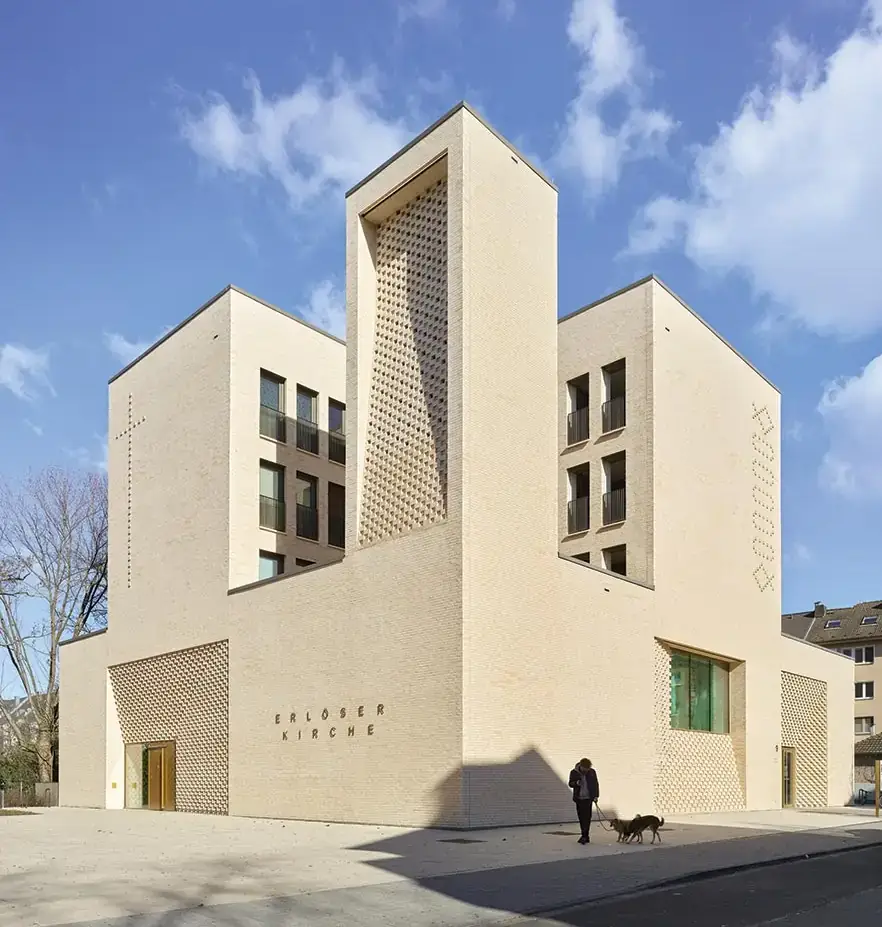
Quietly monumental, the mixed-use building still reads as a church. Photo © Roland Halbe, click to enlarge.
In 2014, two congregations, from the city’s Mauenheim and Weidenpesch neighborhoods, respectively, began the process of creating a new church complex on the larger, more accessible Weidenpesch site by launching an architectural competition. Both congregations agreed to demolish their existing parish buildings; while the 1951 Weidenpesch church, constructed partly from wartime rubble, was deemed unfit for renovation, the Mauenheim property was leased for development. In addition to the sanctuary and other liturgical and congregational spaces, the competition called for a day-care center and 13 market-rate rental apartments—the latter to underwrite the new construction. In response to this unusual programmatic mix, says architect Joel Harris, whose firm, Harris + Kurrle Architekten, won the commission, “We designed a single, unified form and did not separate the different parts of the program, but rather wrapped them around the church, which we located on the most prominent part of the site.”
On a midblock parcel, facing the Derfflingerstrasse, a short, tree-lined, residential street, the resulting compact yet still monumental volume—a sculpted cube with a carved-out middle—fits well with the surrounding four- and five-story multifamily dwellings and defines a public space that extends to an even narrower street to the west. The church and its bell tower occupy the building’s southwest corner and are visible from a nearby commercial thoroughfare. The building’s secular components, to the north and east, assume supporting roles—the residential section forms the backdrop, rising five stories above street level, opening onto a rear garden below grade.
During design development, cost-cutting measures involved scrapping plans for a parking garage and reducing the volume by one story, capping it at 56 feet, thereby eliminating four of the 13 apartments and lowering the sanctuary’s interior height. Nonetheless, the completed Erlöserkirche still feels imposing and evokes, as some German architecture critics have noted, the citadel of Martin Luther’s classic hymn, “A Mighty Fortress is Our God.” At closer range, this impression is balanced by the delicate irregularities and textured arrangements of the sand-toned clinker bricks that clad the reinforced-concrete structure, conveying warmth and approachability.
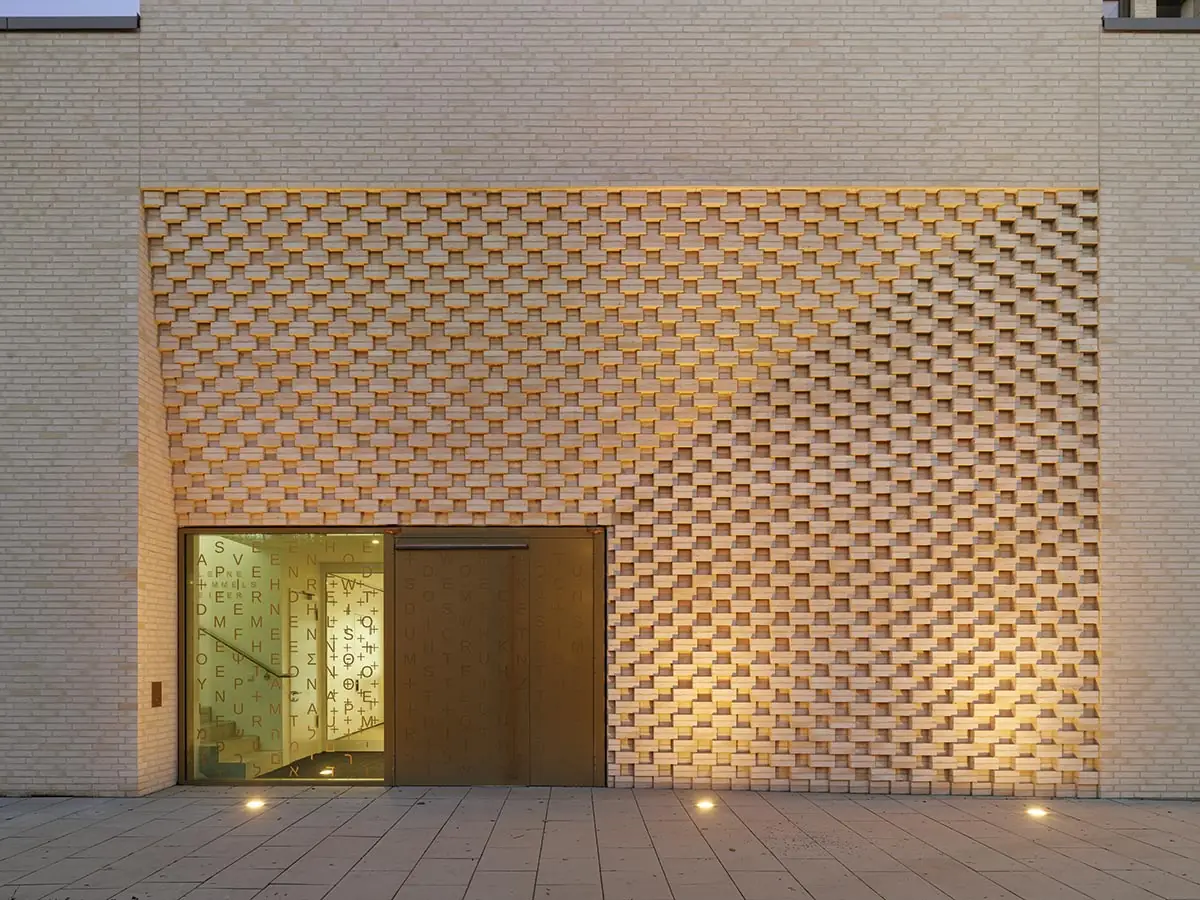
Sand-toned clinker bricks, arrayed in a textured basket weave pattern, give the entrances a subtle sense of grandeur. Photo © Roland Halbe
Although multifunctional, “the building should have the appearance and expressive qualities of a church,” says Harris. To this end, the architects employed two facade strategies—windowless elevations for the sanctuary, bell tower, and major circulation, with vertical fenestration for the remaining functions. Two religious symbols emerge subtly from variations in the brickwork—the simple bas-relief cross on the western facade and delineations of loaves and fishes, ancient signs of Christian hospitality, on the south elevation.
The building required two main entrances—one on the west facade, into the church, and one on the south side, along the Derfflingerstrasse, for the housing and day-care center. Both doorways, as well as the sanctuary’s main window, are accentuated by partially inward-tilting surrounds of Flemish-bond brickwork, rendered in basket weave relief. Further embellishing the church entry, a quote from the Gospel of John—written on glass and metal in languages that are local (German), global (English), and referential to the early church’s Eastern Mediterranean roots (Greek, Latin, Hebrew)—invites those who are searching to enter.
Inside, the sacred spaces and other congregant rooms have white walls with pale gray concrete floors, exposed and polished. Evoking a sense of connection between the old and new venues, religious artifacts from the predecessor churches—such as striking backlit Expressionist stained-glass panels by Elfrieda Fulda in the vestibule and church foyer—play against the austere finishes.
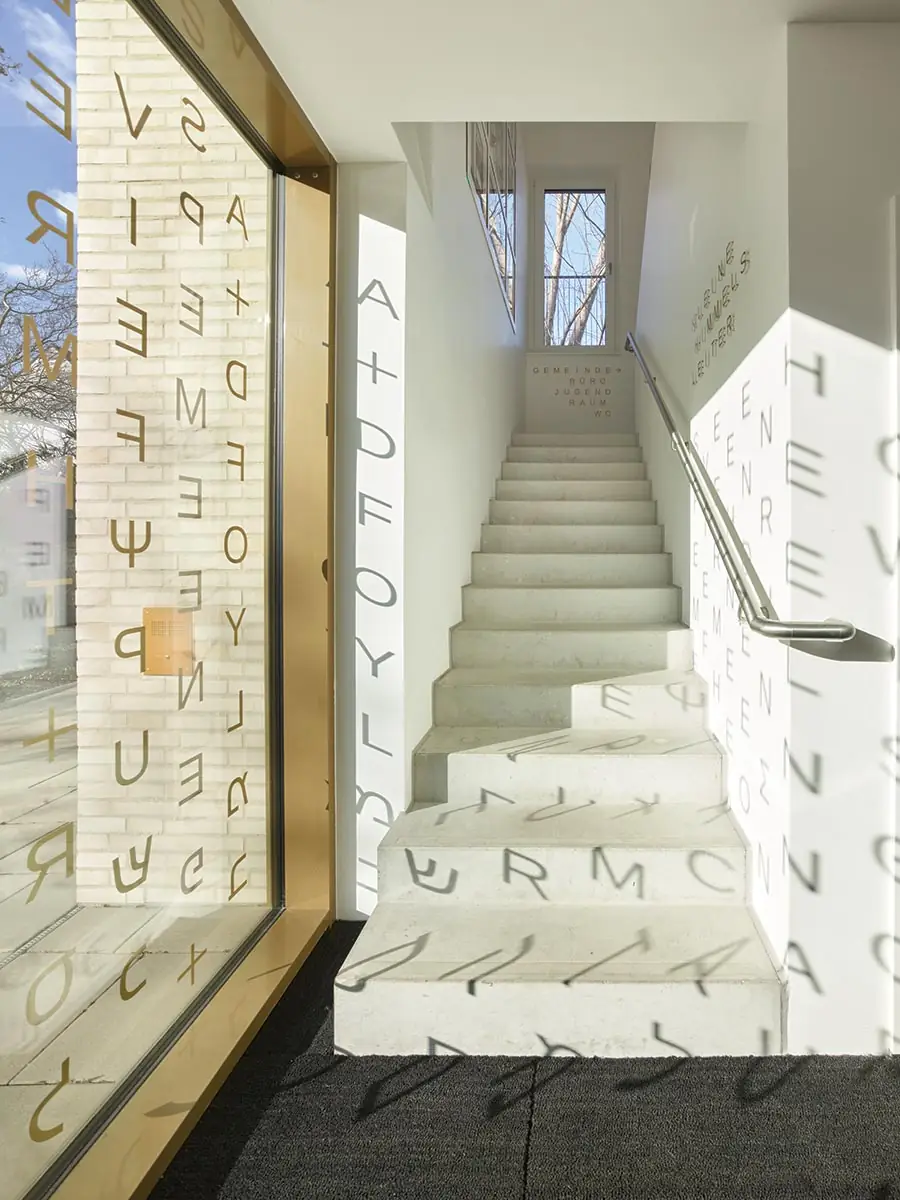
1
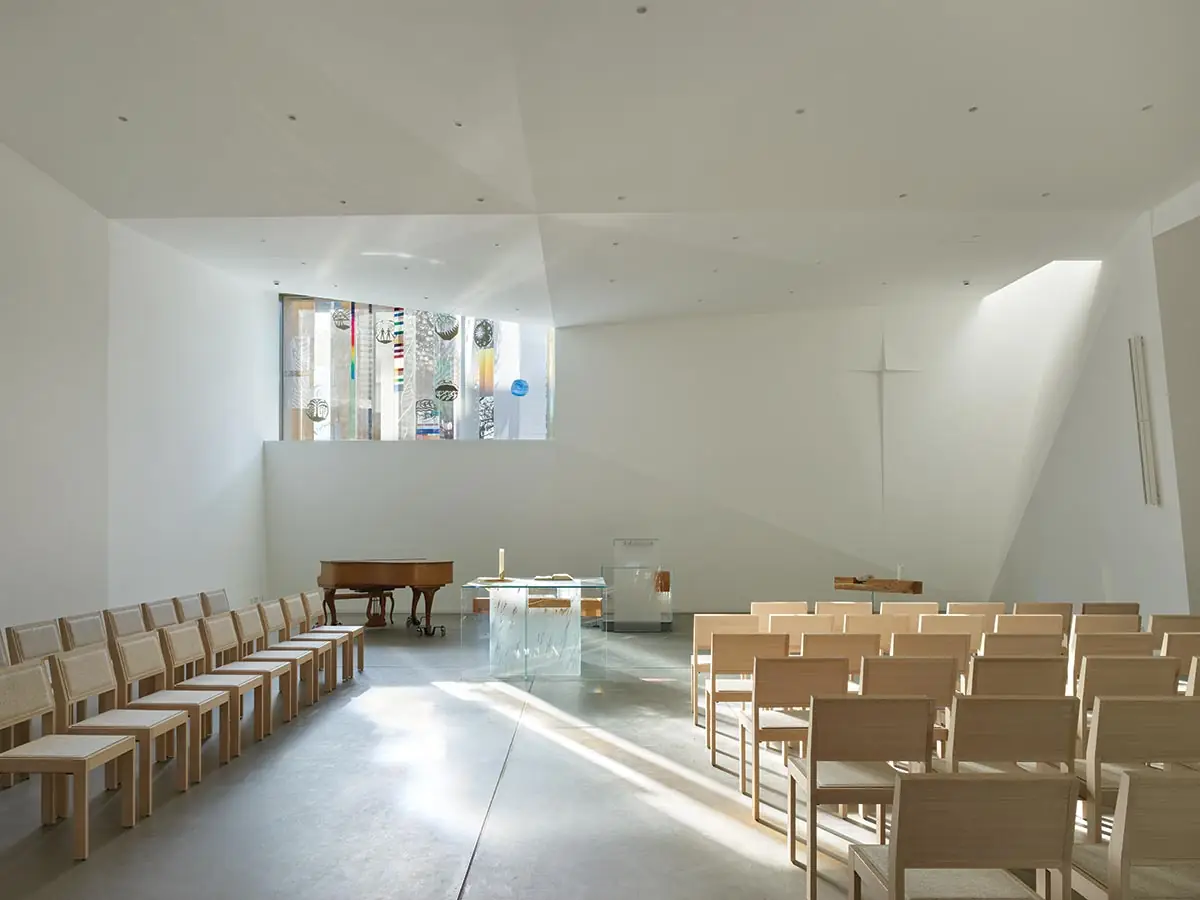
2
Filtering light, the building integrates colorful new fenestration (1) and printed glazing (2), plus stained glass from one of the predecessor churches (3). Photos © Roland Halbe
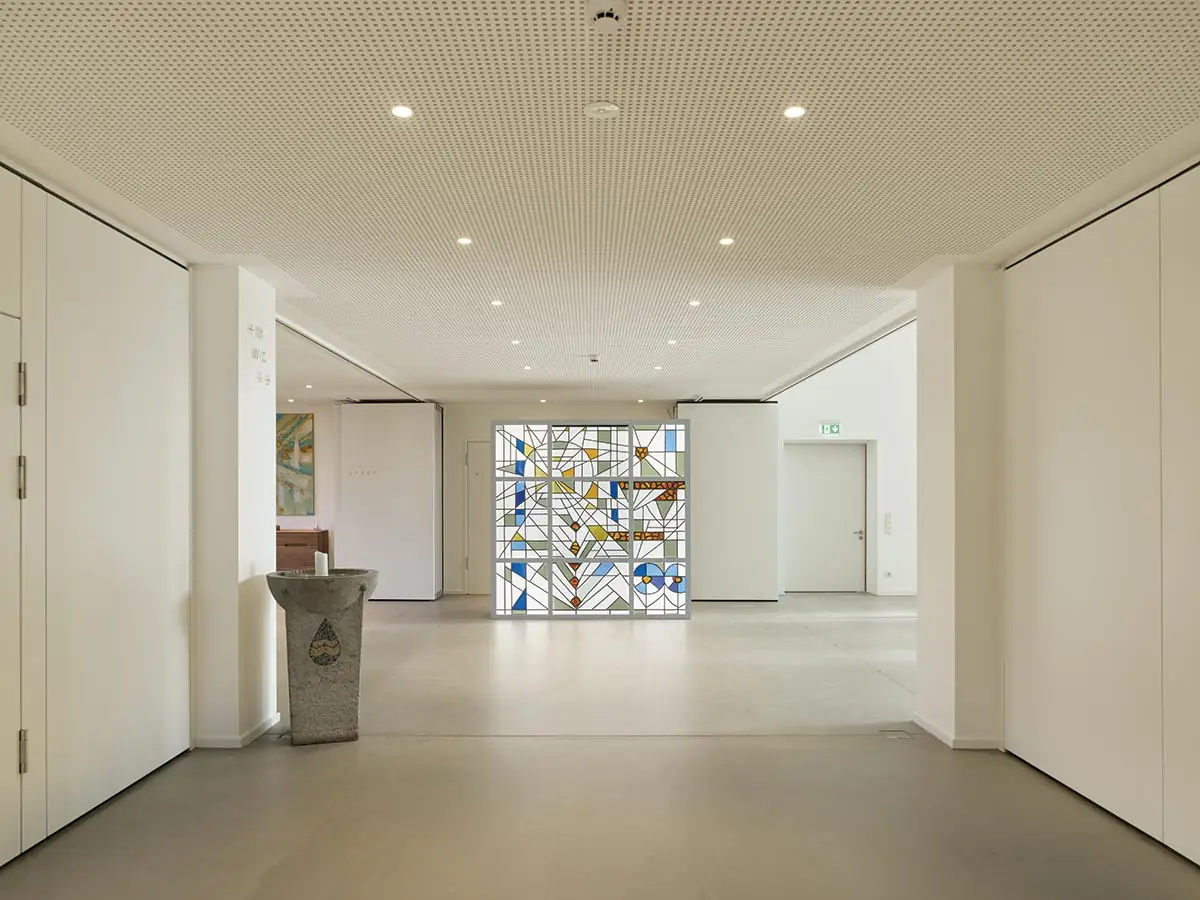
3
The church interior, measuring 40 feet wide by 45 feet long and rising up to 18 feet high, includes boldly inclined wall and ceiling planes, positioned for acoustic purposes so that words spoken from the center altar disperse evenly throughout the space.
Natural illumination—the shaft of light emanating from the ceiling at the southwest corner, drawing the eye to an adjacent cross, and a new stained-glass window on the south wall by Gabriele Wilperts, projecting color and pattern onto the canted surfaces—lends this surprisingly intimate space a feeling of the sublime.
Pastor Susanne Zimmermann guided the decade-long process to create this building, bringing the two congregations together and mediating between them and the architect. Now the Erlöserkirche strives to be, as Zimmerman puts it, “surrounded by life”—and that extends from community events in the entrance court to classes and celebrations inside. Throughout the building, boundaries between the place of worship and secular spaces become blurred, forming a unique hybrid that includes some shared circulation. Through ordinary interactions, children from the day care intermingle with tenants (representative of Cologne’s diverse population and including the pastor and her family) as well as congregants.
To encourage people to explore spirituality, the simple act of bringing them into daily, even if peripheral, contact with the church has already proven itself as a strategy. And, not surprisingly, the building has sparked local curiosity. “People are always looking inside and asking to take tours,” says Pastor Zimmermann. As she observes, this interest—combined with the transcendent qualities of the sanctuary—has spawned open devotional sessions on Sunday evenings, when people gather, accompanied by a musician or a member of the clergy, for discussion or meditation, or just to experience the space. “This church hasn’t changed only the streetscape,” she says. “Its radiance has changed people too.”
Click plans to enlarge
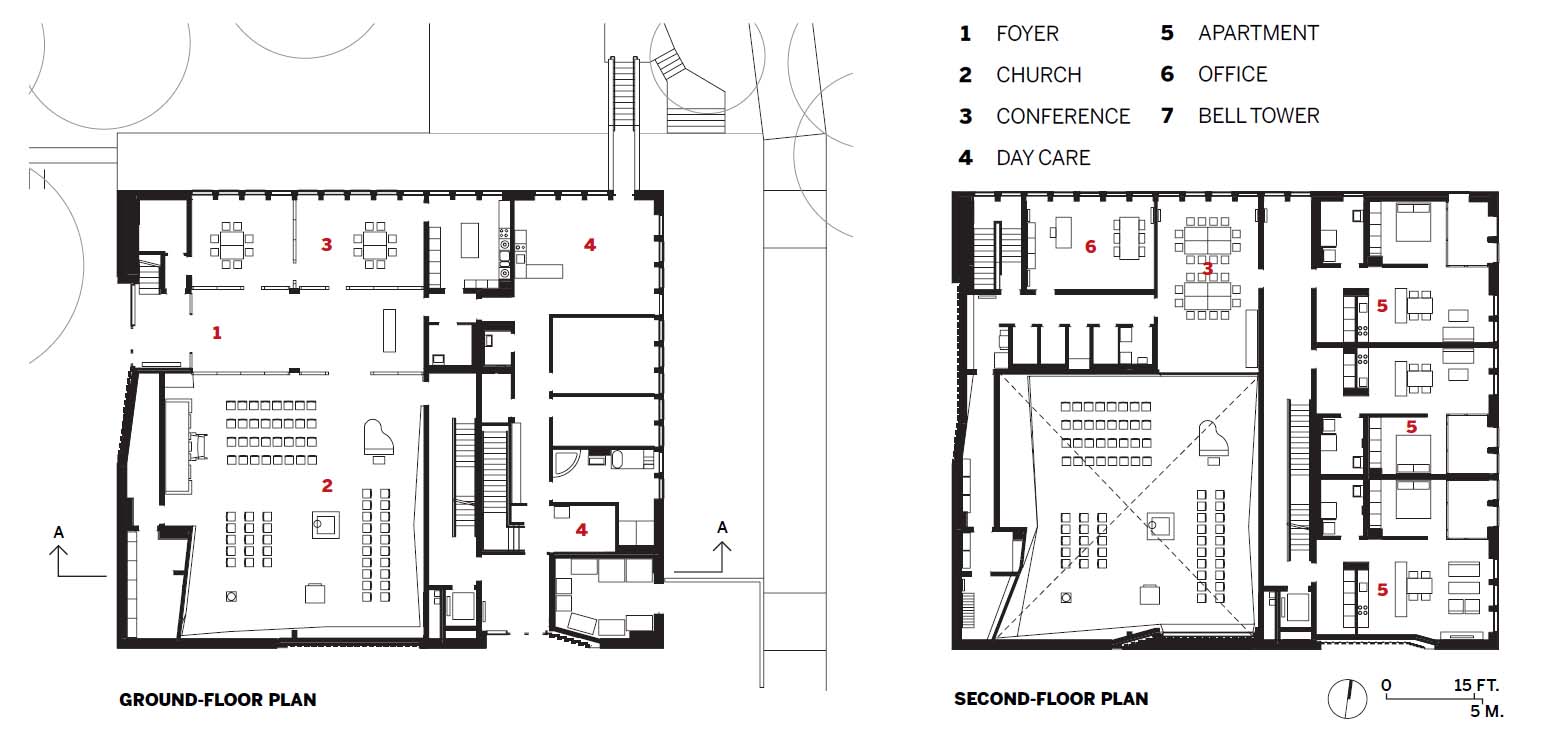
Click section to enlarge
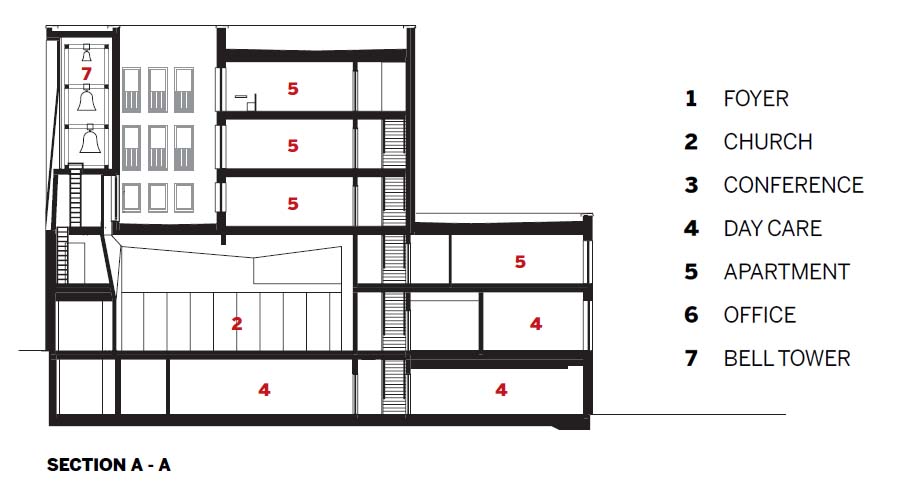
Explore other spiritual buildings from the June 2023 issue.
Credits
Architect:
Harris + Kurrle Architekten
Associate Architect:
Schilling Architekten (site management)
Engineers:
Engelsmann Peters (structural); Gassen, IB Kierdorf (technical planning)
Consultants:
Studio Grijsbach (landscape architect); DesignKlinik (interior design)
Client:
Evangelical church community, Köln-Mauenheim-Weidenpesch
Size:
18,900 square feet
Cost:
$12.7 million
Completion Date:
January 2022
Sources
Masonry:
Feldhaus Klinker
Roofing:
Bauder (elastomeric)
Windows:
Schüco (metal frame); Velux (plastic frame)
Doors:
Schüco (exterior entrances); Neuform, Schörghuber (wood and fire doors)



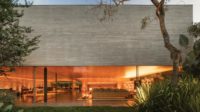
Post a comment to this article
Report Abusive Comment